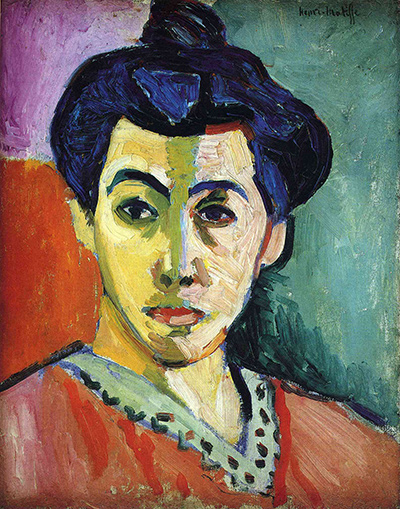In this iconic oil on canvas work completed in 1905, Henri Matisse painted a portrait of his wife, Amélie.
The painting’s composition consists of a portrait of Madame Matisse in the foreground and a background bisected into several distinct areas of colour.
Along with the subject of Madame Matisse, colour is the focus and most significant element of the work, with the two halves of her face in different colours, one in flesh tones and the other in pale greens.
A green stripe separates the two sides of the face, acting as an artificial shadow and dividing the face in a traditional portraiture style, with a light and dark side. The natural light is interpreted as colours and the visible brush strokes enhance the sense of artistic drama.
Matisse has used colour here to illustrate the emotions he feels for his wife.
These colours are primarily vibrant, striking shades of orange, red, yellow, purple and green, accompanied by the use of a cooler, calmer sea green and black. This combination of bold colours provides a striking contrast to the eye.
Interpretation of the piece unearths an example of Matisse’s ability to use colour for emotional appeal. He is able to convey a love of his wife through the carefully chosen combination of colours, as well as the different aspects of his wife’s personality.
The yellow on her face seems to portray a harder, more detached personal trait when contrasted with the warmer orange and pink, which evokes a magnetic warmth. The green line itself seems to serve as a neutral point at which the two personalities are divided.
Portrait of Madame Matisse serves as an excellent example of what Matisse was trying to accomplish in art: the use of colour to express and convey emotions.




